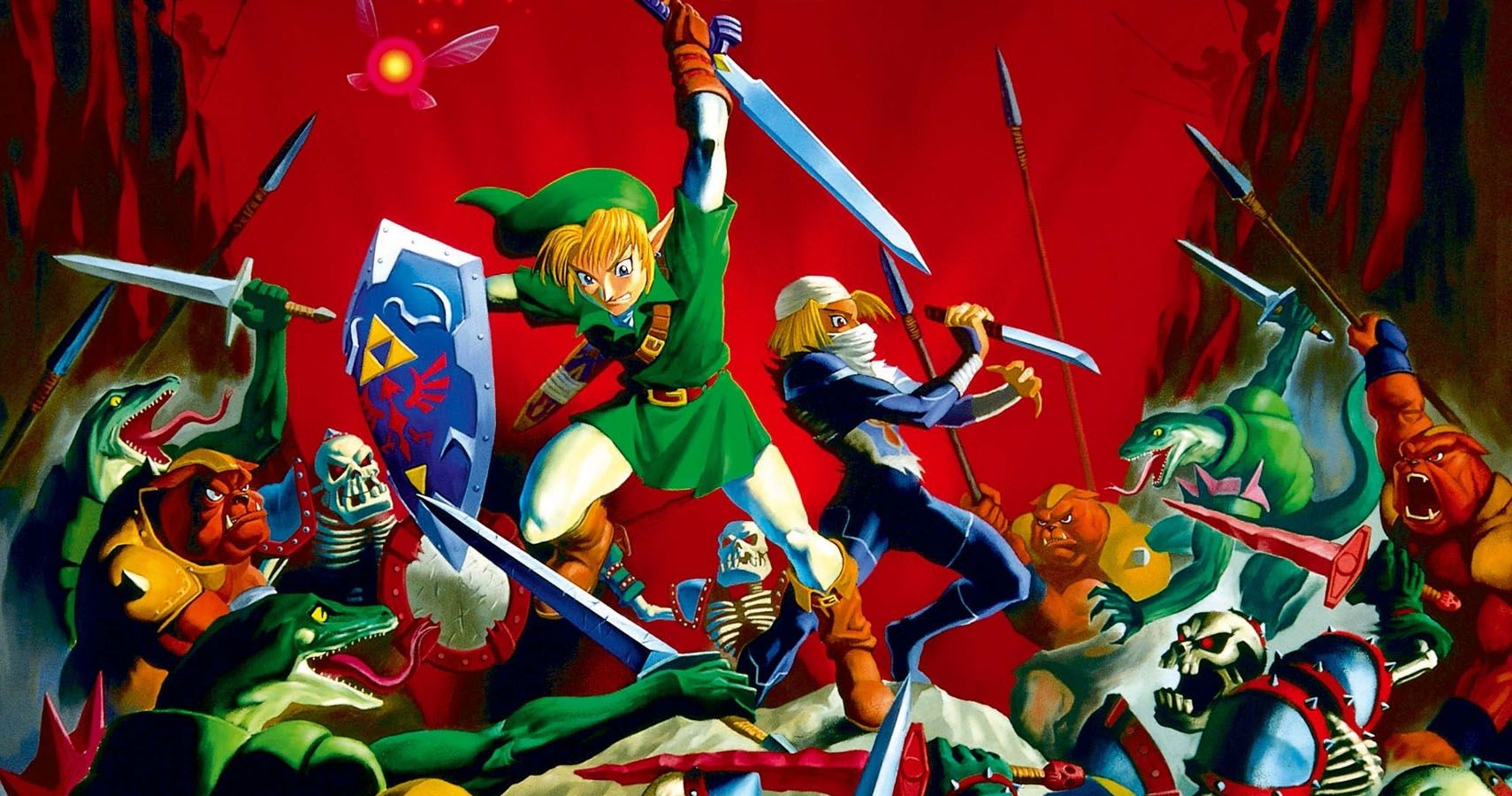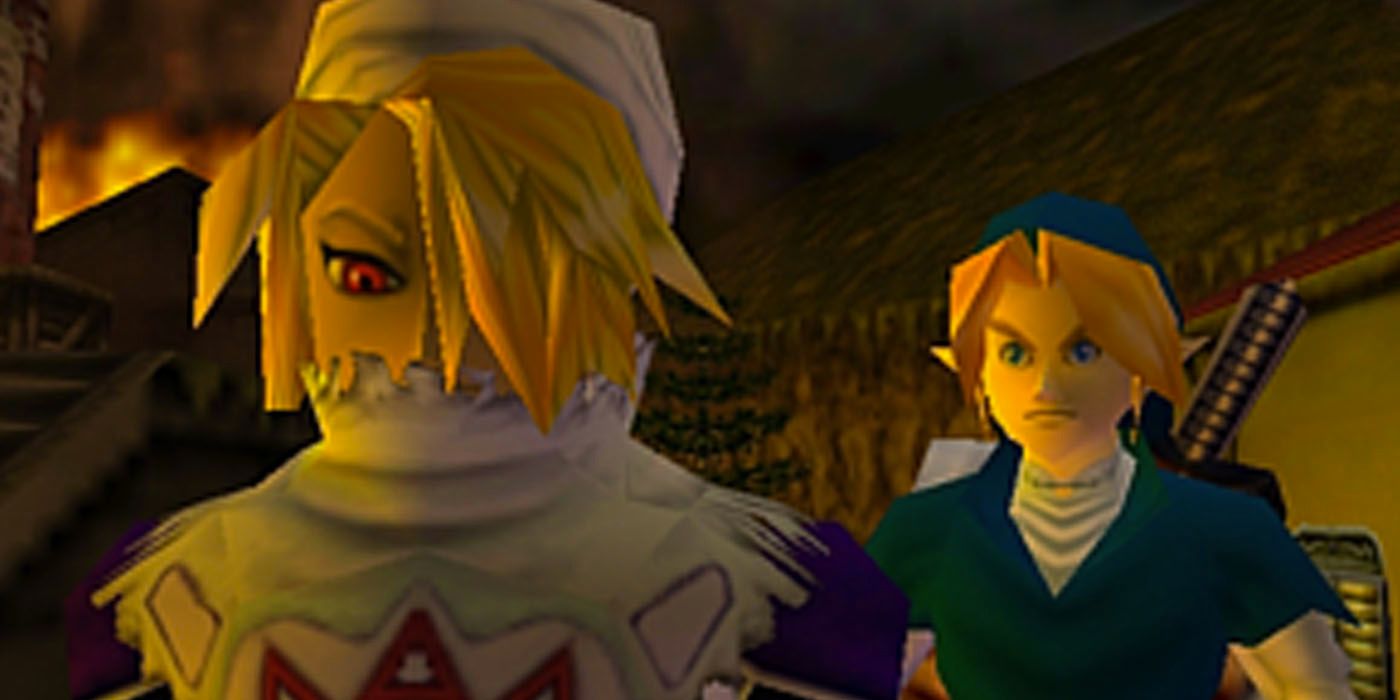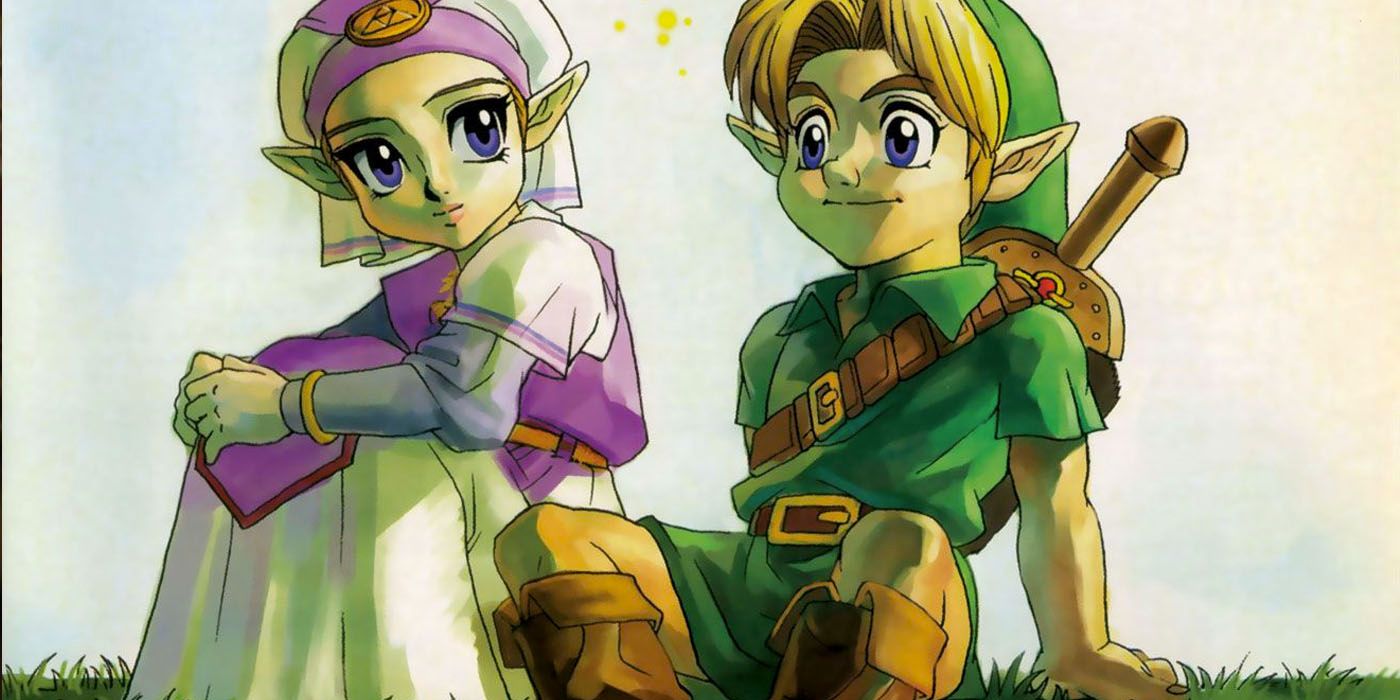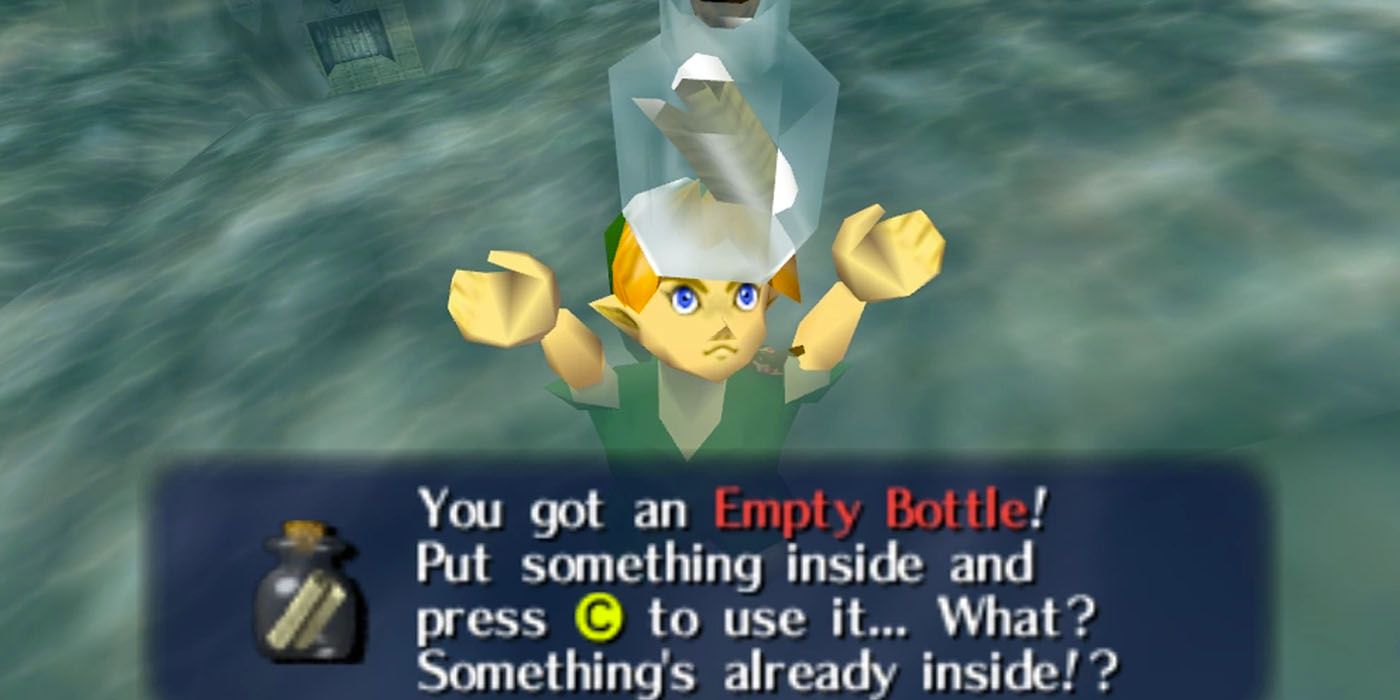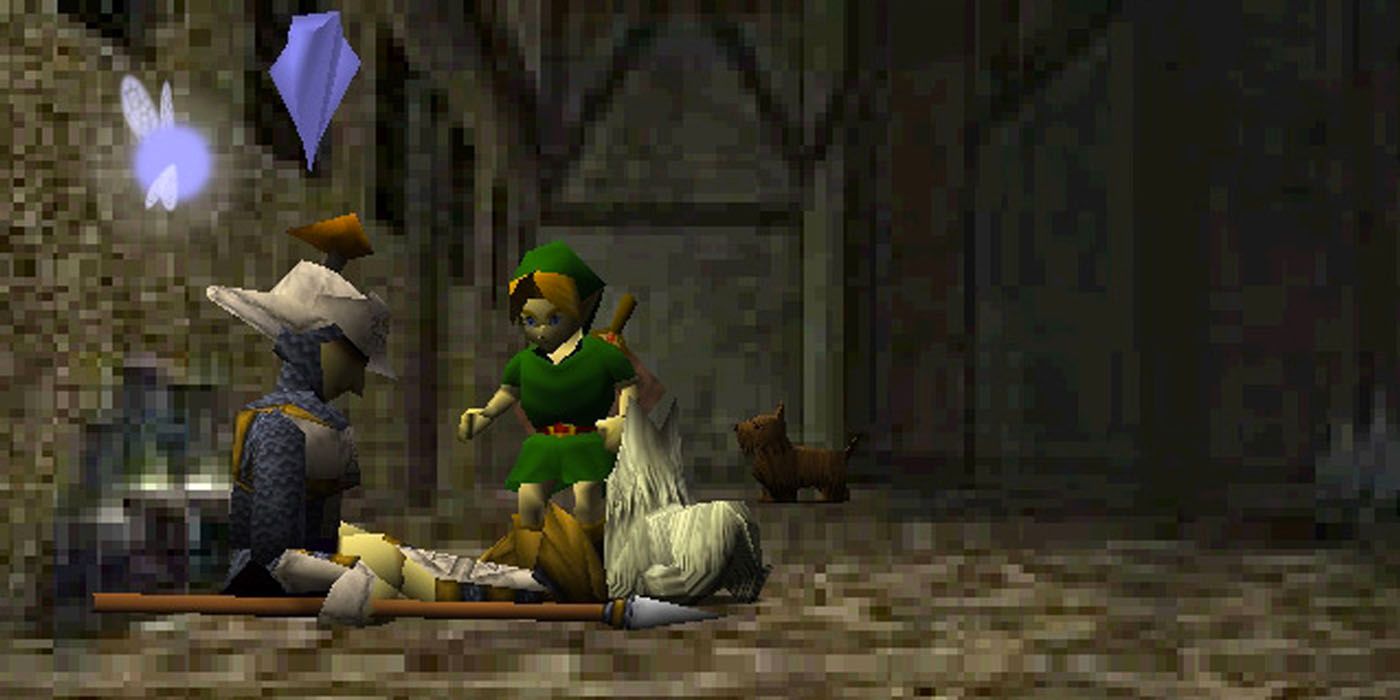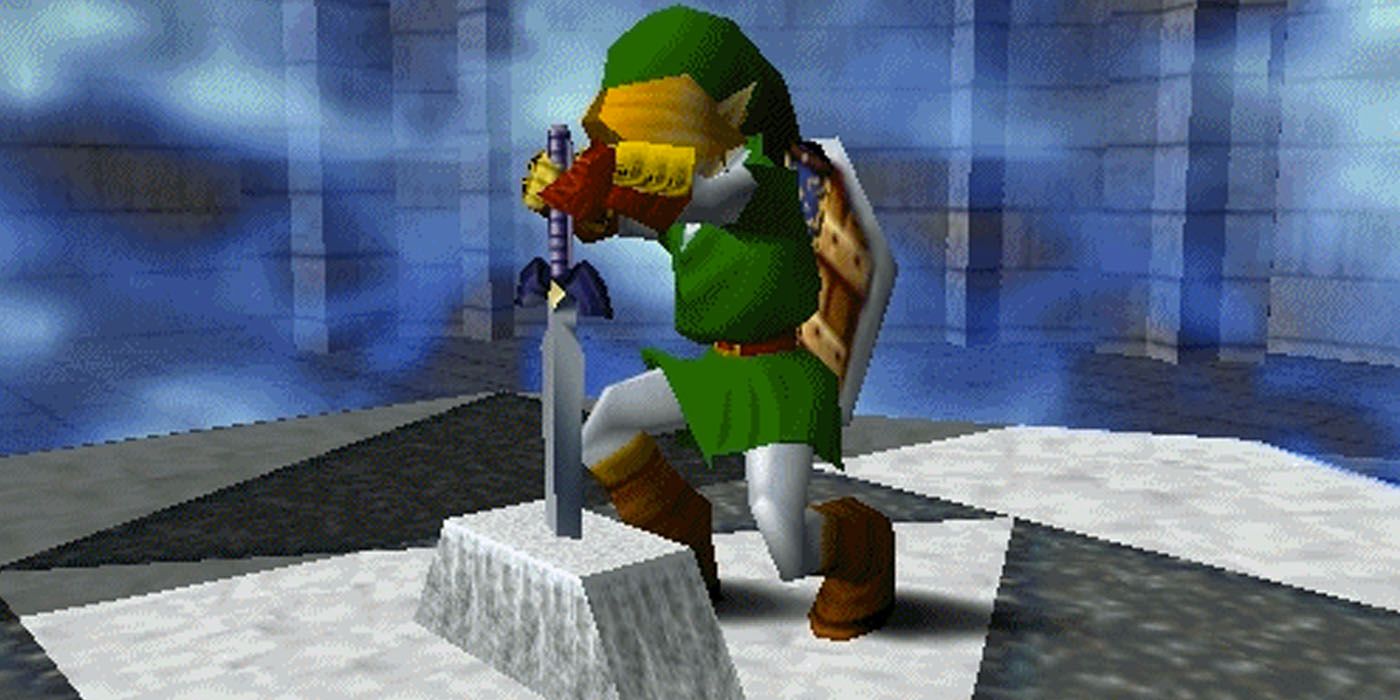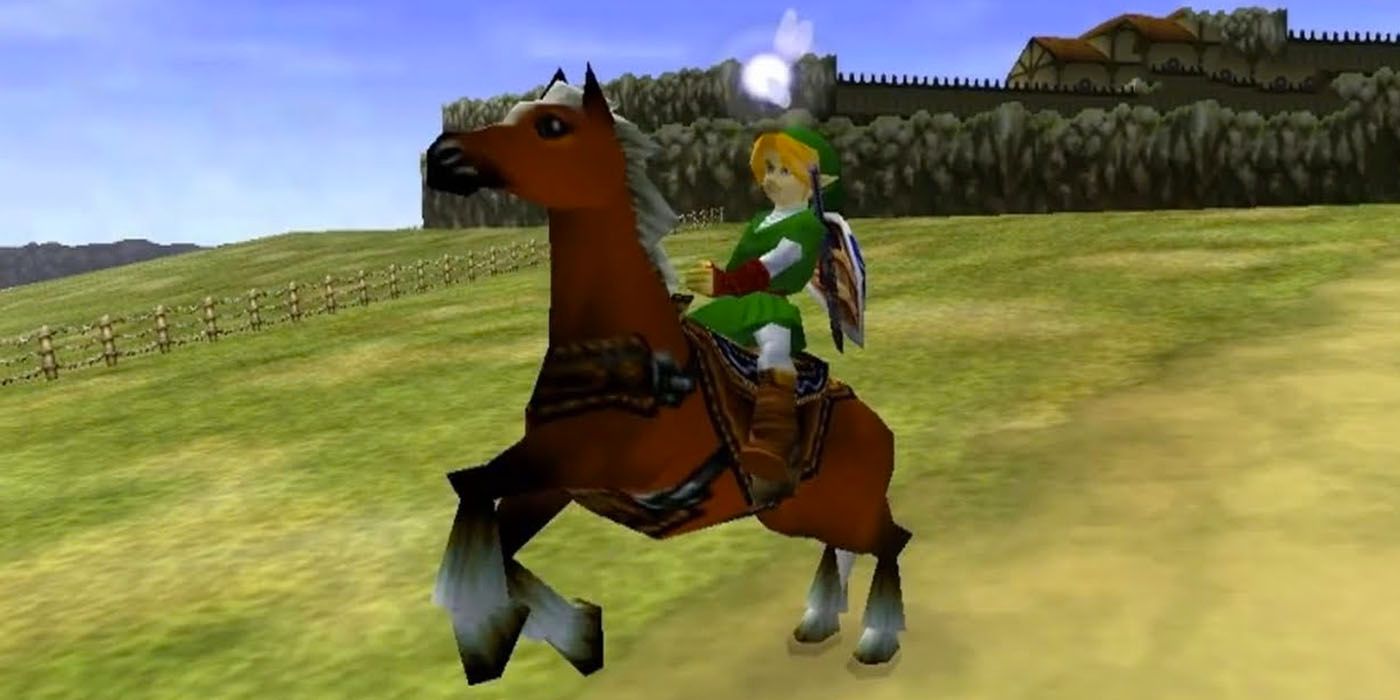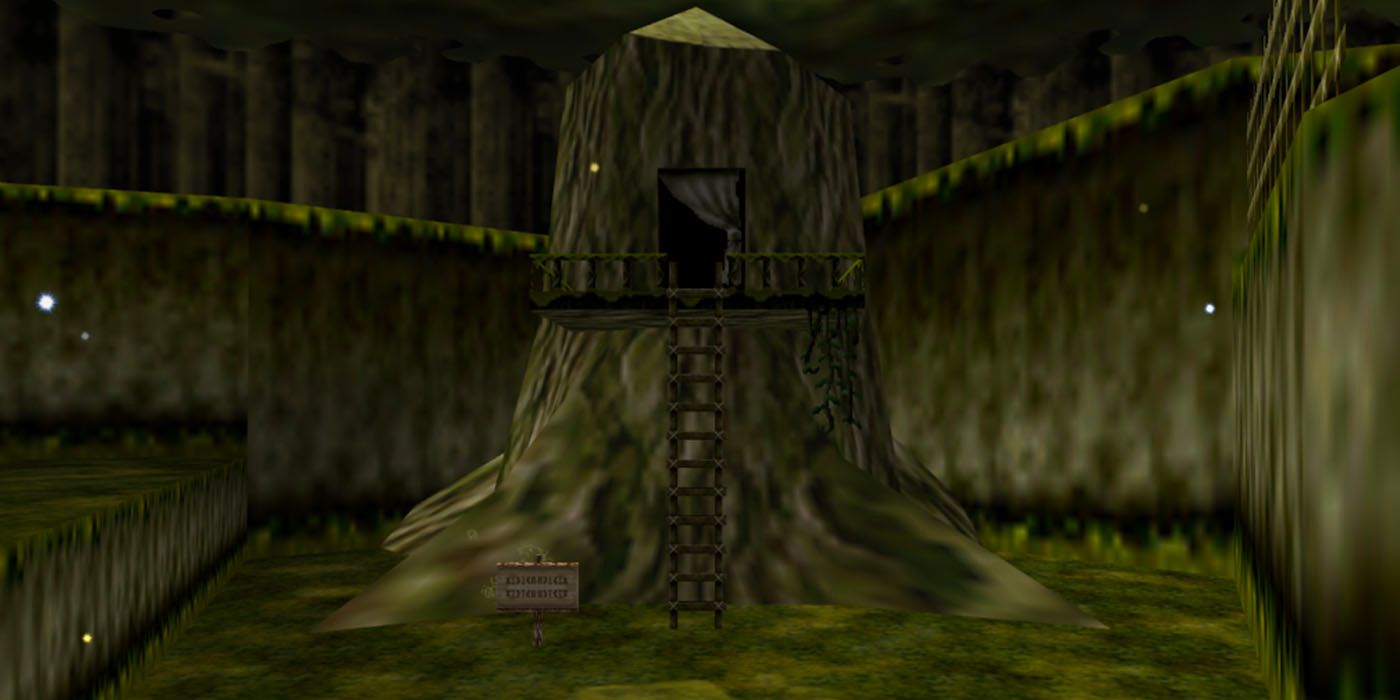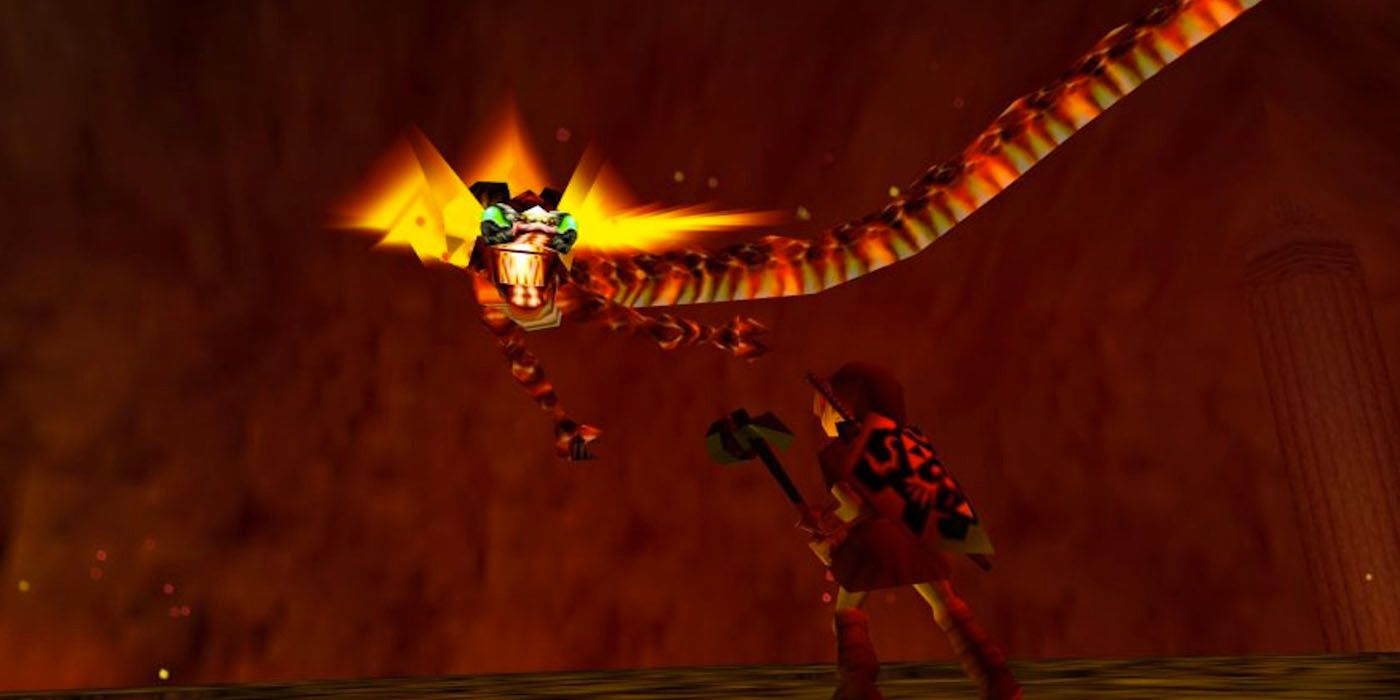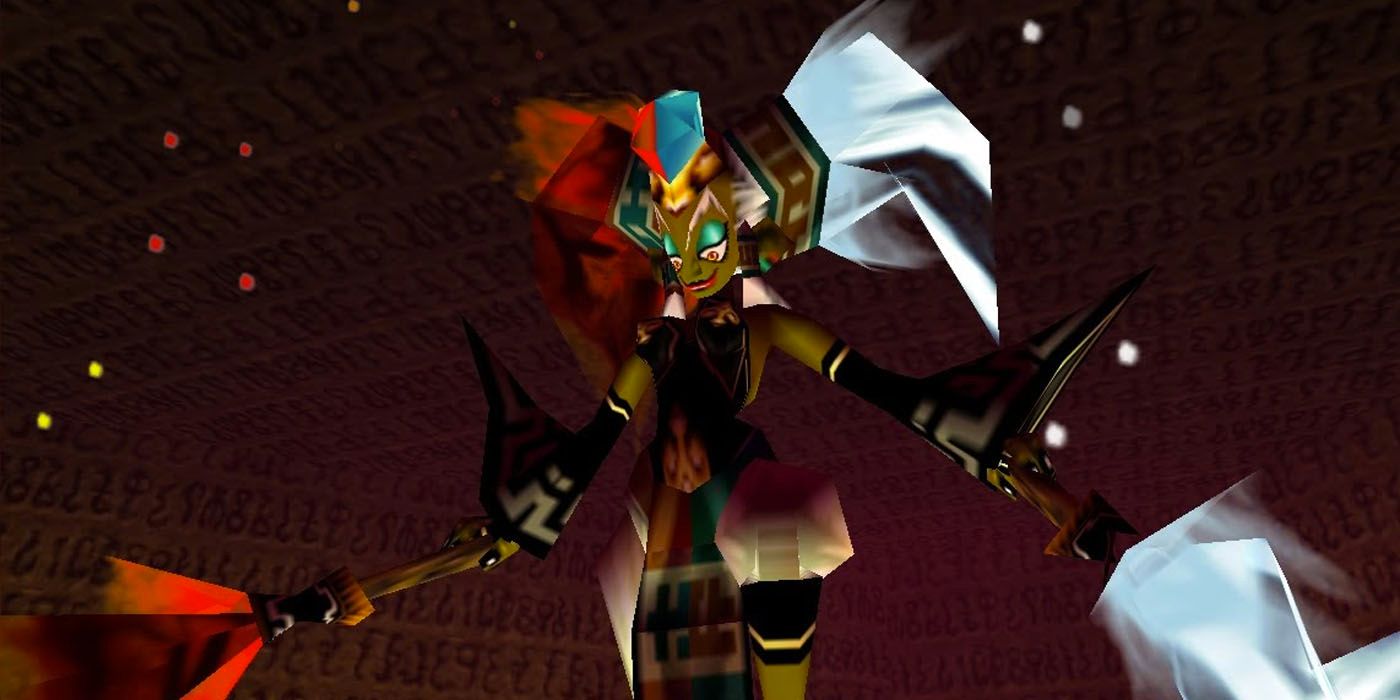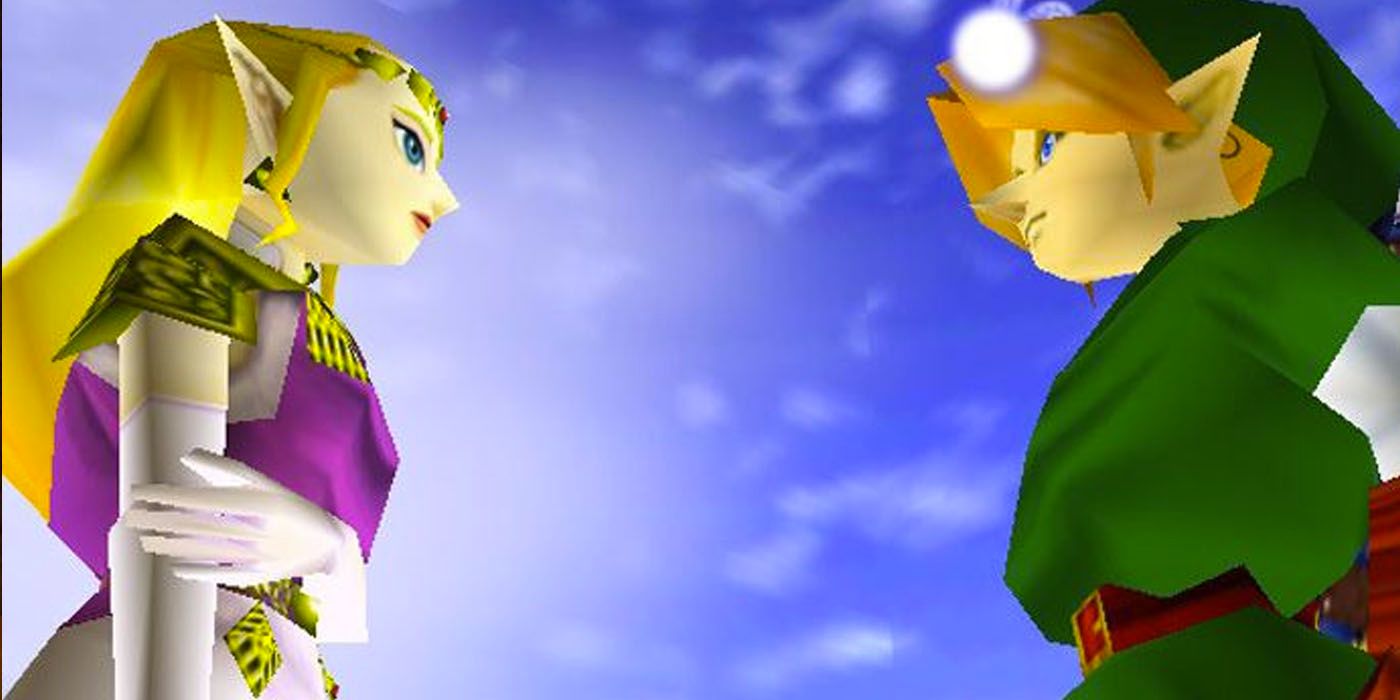Good game design doesn’t age. Everything shows it’s age, or course, but any video game built on a strong enough foundation will always stand the test of time– regardless of any technological advancements made in the field. This is very much the case for The Legend of Zelda: Ocarina of Time, a game that could release as is in 2020 to widespread critical acclaim. From the classically epic story to some of the tightest dungeon design & pacing in the franchise, Ocarina of Time is a masterpiece in every respect.
It’s also quite a dense game, and far more nuanced than one might expect at a glance. One playthrough simply isn’t enough to glean everything Ocarina of Time has to offer. From gameplay mechanics to how the story is presented, The Legend of Zelda: Ocarina of Time is one of Nintendo’s most jam-packed video games.
Epic Cinematography
Ocarina of Time’s original Nintendo 64 release is often criticized as slow-paced, but the title’s lethargic text crawl is actually fairly deliberate. Without it, the game’s cinematography begins to fall apart (just compare how awkward & rushed Ocarina of Time 3D’s cutscenes are in comparison to the original’s.)
As far as cutscene direction goes, Ocarina of Time is more sophisticated than the average AAA release, using theatrical constructs such as movement to stillness to frame scenes & action around their dialogue. As camera cuts and character movements are paced with the dialogue’s fixed scroll in mind, Ocarina’s already classically epic story manages to add an even greater layer of drama onto its text.
Link & Zelda’s Rush To Grow Up
It doesn’t take reading between the lines to see that Ocarina of Time is a coming of age story through & through. That said, the plot is fairly unapologetic when it comes to detailing the harshness of growing up. Ganondorf’s conquest of Hyrule directly stems from Link & Zelda’s half-baked plan to beat him at his own game.
Zelda essentially coerces Link into playing “grown ups” with her, taking it on themselves to save Hyrule when no one asked and Hyrule isn’t in immediate danger (though tensions with the Deku Tree, Goron, & Zora suggest that time is soon approaching.) The knight guarding Death Mountain puts it best: Link is playing hero. In their rush to grow up and act like adults, Link & Zelda make the childish mistake of assuming their plans only benefit them.
Something’s Up With Ruto
Princess Ruto is one of the most fascinating characters in Ocarina of Time, and there’s quite a bit of mystery surrounding her in both timelines. In the past, it’s actually unclear who left “Ruto’s Letter.” Its handwriting would suggest Ruto herself, but Link’s mention of the letter goes over her head. She could be playing hard to get with him, but this could imply Ganondorf wrote the letter to bait Link into getting the Zora’s Sapphire.
In the future, Ruto– like Darunia in the Fire Temple before her– mysteriously disappears into the Water Temple. One can only assume the worst as Ruto is nowhere to be found and only seen again in the Chamber of Sages.
The Dying Soldier
One of the only time sensitive secrets in Ocarina of Time, the Dying Soldier only appears right before Link pulls the Master Sword from its pedestal for the first time. The Dying Soldier’s presence wasn’t common knowledge for some time, in large part due to the fact that players have no reason to seek him out.
As soon as Link gets the Ocarina of Time, he’s immediately directed towards the Temple of Time– a large building that’s hard to miss. Should players enter Hyrule Market’s back alley, however, Link will stumble upon a dying soldier who’ll inform the player that Ganondorf attacked before taking his last breath.
There’s More Gameplay For Young Link Than Adult Link
The divide between young Link and adult Link is not an even split. Considering the latter has five full length dungeons to his name rather than the former’s three, it’s easy to assume most of Ocarina of Time is spent playing as adult Link, but this is only if players avoid doing as much side content as possible.
In actuality, there’s a bit more gameplay for young Link than adult Link. It’s more of a 60/40 split than anything. Before Link even pulls out the Master Sword, players can nab more than half of all the Heart Pieces, nearly half of all Gold Skulltula Tokens, two magic spells, both wallet upgrades, the Bomb & Deku Nut upgrades, three bottles, and the Mask of Truth. This isn’t even including all the Heart Pieces tied directly to planting Magic Beans in the past, either.
Epona Is A Side Quest
Contrary to popular belief, Link never needs to step foot in Lon Lon Ranch to save Hyrule. Epona is most commonly used to jump the bridge into the Gerudo Fortress in the future, but the Water Temple’s Longshot cuts the distance just fine. Even though Epona is featured prominently on the title screen, she’s little more than a side quest.
Epona being a side quest speaks to old school game design more than anything. These days, Epona would not only be mandatory but introduced fairly early on. In Ocarina of Time, players are forced to learn the geography of Hyrule themselves, only gaining access to Epona if they seek her out.
Waking Up In Kokiri Forest
One of the ways that Ocarina of Time conveys the harshness of growing up is by depriving the Link of his home when he becomes an adult. When saving & exiting the game in the future, Link will always restart in the Temple of Time– unless players sleep in Link’s bed. By returning to Kokiri Forest and sleeping in Link’s bed before shutting off the game, players will actually start their games back home instead of the Temple.
That said, this doesn’t fly in the face of the game’s theming. If anything, waking up as a grown man in a home meant for a child (having slept in a bed meant for a child) puts into perspective how you can truly never go back home once you’ve grown up.
You Don’t Need The Fairy Bow For The Fire Temple
Another Ocarina of Time misconception is the notion that the Forest Temple must be done as the first adult dungeon. While Sheik heavily suggests Link go to the Forest Temple first (even locking time travel specifically behind the Forest Medallion,) players have some options here. Notably, the First Temple is perfectly doable as the first adult dungeon.
While there is a room that requires the Fairy Bow inside the Fairy Temple, it’s only for an optional chest. Every key and the Megaton Hammer can be found just fine without the Bow, and there aren’t any enemies the Bow is needed to kill (though it makes taking down Volvagia easier.)
Shadow Vs Spirit: The Real Final Temple
There’s enough evidence to suggest that both the Shadow and Spirit Temples were meant to be Ocarina of Time’s final dungeon at different points in development. The Spirit Temple speaks for itself: after Ganondorf takes over Hyrule, Link breaks into the Gerudo Fortress and conquers a temple built in a Goddess’ image to defeat Ganondorf’s surrogate mothers.
It’s a climax if there ever were one, but the same could be applied to the Shadow Temple on a more conceptual level. Link braves a dungeon that’s been lurking under his feet all game, Sheik inadvertently reveals herself as Zelda yet again, and Impa suggests Link will reunite Zelda as soon as the Temple ends.
Link Never Finds His Place In The World
The Hero of Time does not have an easy life, and his arc centers around a perpetual othering. At the start, he’s the boy without a fairy. When he gets the fairy, however, Link is more or less sent away from the Forest where he grew up where he becomes the boy with a fairy to the people of Hyrule.
When Link becomes an adult, he learns that he’s not even a Kokiri, but a Hylian, making his othering even more pronounced– and as he’s been missing for seven years, his literal place in the role is all but uprooted. Link is forced into serving as a hero, but it’s little comfort as the only character who can relate to him– Navi– leaves him behind as soon as their journey concludes.

